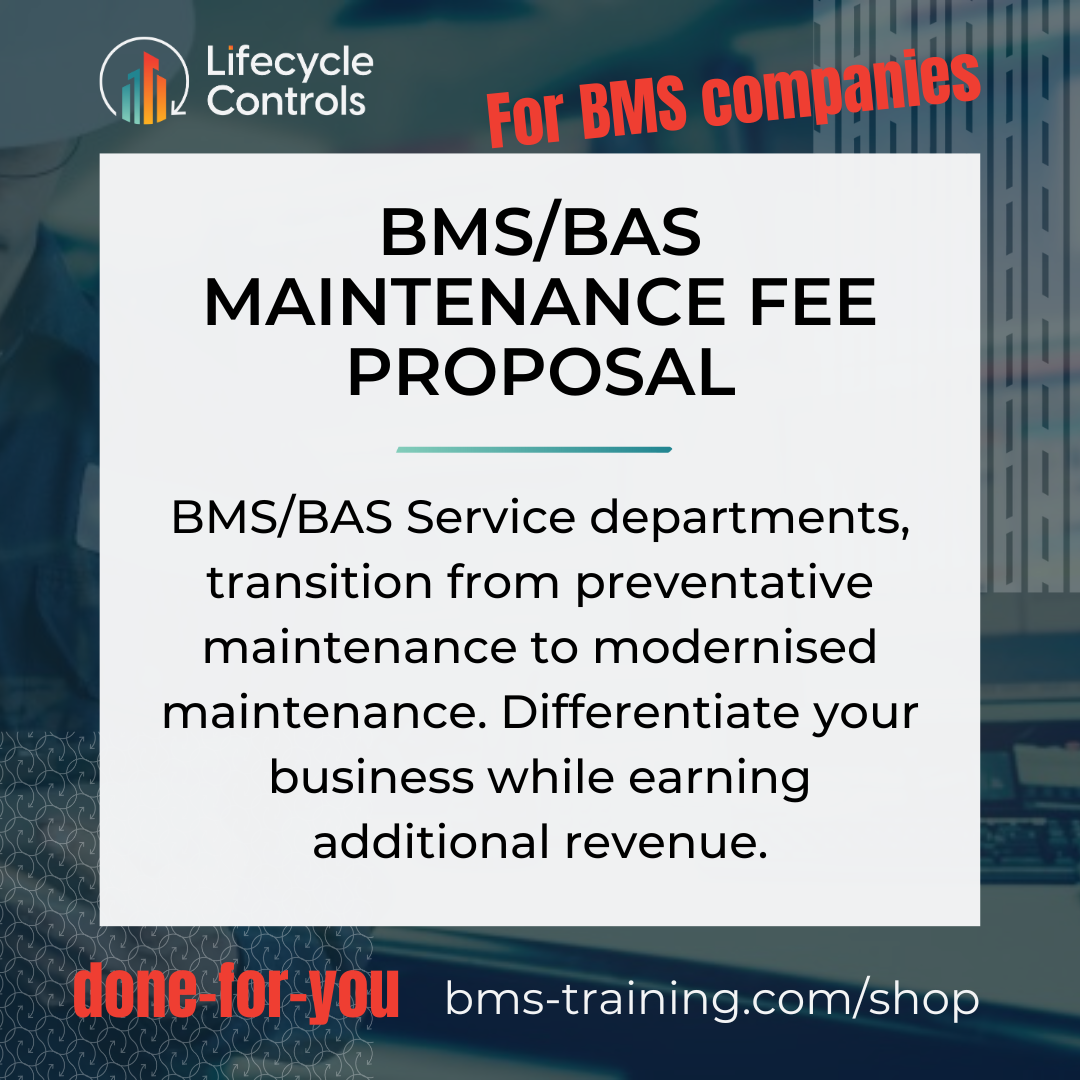We need to change how we specify and procure the BMS
50 years ago, building control systems consisted of relays, thermostats, time clocks and pneumatics. It made sense for mechanical engineers to scope and specify the control system as a subsection of the mechanical specification.
However, the cost of gas, water and electricity, NABERS ratings, green star and clients expectations are driving technology into buildings, but how difficult is it to just get a sensor on a wall and a valve in a pipe in the current construction industry. How are we supposed to now also install an Integrated Platform?
I spent 4 years writing specifications, trying to find ways to get high-quality Building Management Systems delivered in major new construction projects, and it's near to impossible. Too many of the key stakeholders do not have a long term investment in the building. This isn't a criticism. Would you spend money you didn't need to, if you started with a 0% margin, and only had ownership for 3 years?
I have concluded that the construction industry and building end-users priorities are totally unaligned and this is not going to change. You can brief, scope, specify and manage as much as you like, but proper BMS commissioning and tuning is not going to happen. Preceding trades are going to run late, power will come late, the Integrated Communication Network will not be ready and the practical completion date will not move. Something needs to change.
BMS systems need to be specified by BMS/technology specialist consultants.
The BMS contractor needs to be engaged alongside the mechanical and electrical contractors.
There isn't going to be time for commissioning, tuning and awesomeness. Those days are over, so stop trying to force it, we need to change the BMS delivery model.
Points 1 and 2 are reasonably straight forward, here is a thought on point 3. Its not tested and not perfect, but we need to start somewhere.
Change the requirements for practical completion.
All instrumentation installed and point to point tested
All controllers installed, online and programed
All field sub-networks installed, devices online and points built into the database
All 3rd party systems integrated and points built into the database
All HVAC graphics functionally complete
All metering devices online and recording data at 15-minute intervals.
Draw a line in the sand, practical completion achieved.
Now, without the pressure of being influenced by other contractors priorities and helping to meet their contractual obligations, lets spend 6-months getting stuck into the stuff that actually makes a difference.
Final commissioning, tuning control loops, staring at the screen for hours, days or weeks, studying how each system is working and more importantly how it is affecting other systems.
Build the nice to have graphics, dashboards, reports, quick searches and optional tools that make optimisation easy and fun.
Modify or reprogram those control strategies that seemed like a good idea, that worked last time, but just aren't working in this particular application.
Collaborate with, for example, the chiller supplier to better understand the details and squeeze that extra 0.05 star out.
Build up Energy Management Systems that do something more than just open up a dashboard of each individual meter, build virtual meters, kWr and COP calculations.
Work on the building analytics algorithms.
Work on those never done before Integrated Platform interfaces to new technologies.
Give the client what they paid for, and something that you can be proud of.
This is quite an extreme change, but we need to try something otherwise we are going to get left behind.
It seems to me that our risk mitigation strategy as we approach impossible deadlines, is to send in Notice of Delay letters to protect ourselves from liquidated damages. How does that free up time? How does that create some breathing room?
We are essentially delivering projects with the same delivery model as we did in the 1990’s, just with the following little extras thrown in:
200 VSD’s.
300 Electric meters.
100 Water meters.
10 Gas meters.
20 Thermal meters.
200 Graphic pages.
1,000’s of physical points.
1,000’s of software points, alarms and trends.
Complex control strategies.
High Level Interfaces to: Chillers, Boilers, Lighting Control Systems, Generators, UPS, ATS, Harmonic Filers, Power Distribution Units, CRAC units, Security, CCTV, VRF, packaged control systems etc.
And, whats next: Space utilization, location services, tenant systems, asset tracking, smart lockers, way finding, food ordering, room booking systems, child care, active directory, public transport, news feeds, weather, BIM, machine learning and AI etc. Because.. it’s not just HVAC control anymore!
Featured - Latest published online course
BMS for mechanical consultants course
This course was developed by a BMS consultant for mechanical consultants involved in Building Management System projects. Learn how to reduce risk to your company, your client, and the BMS contractor.
Self-paced online course.
12 hours of video lessons.
Training manual (+90 pages).
BMS design examples.
A sample of Lifecycle Controls BMS specification clauses are provided to assist with learning. You can use these in your own specification.
Online shop
Free control strategy mini courses
Create a free account in our Learning Management System and complete the free chilled water control system mini-course. A certificate is provided at the end of the course. A copy of the control strategy is provided as a Microsoft Word document for you to modify in your own BMS designs.
Please join our newsletter
To be notified when new courses, design templates, and digital products are published.
For updates to coaching availability.
For updates to business-to-business consulting services.
New Youtube video releases and occasional updates on what I am up to.
I will not fill up your inbox with crap.
Bryce Anderson
I am an independent Building Management System consultant based in Australia. I started in the BMS industry in 1998 and initially worked for BMS companies for the first 15 years of my career (2 years in South Africa, 9 years in London, and 4 years in Melbourne). In 2014 I transitioned into BMS consulting, saw a massive gap in the lack of specialist BMS consulting, and started Lifecycle Controls in 2017.
My focus is currently on BMS technical training, coaching, and B2B consulting for BMS companies and mechanical consultancies. Because, fixing one project at a time was making no difference. Training thousands of engineers will :-)





































